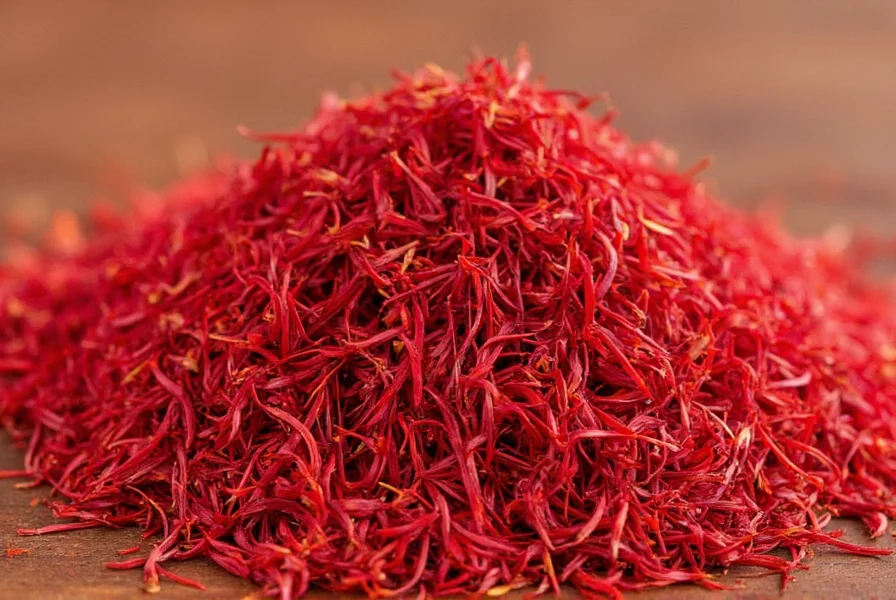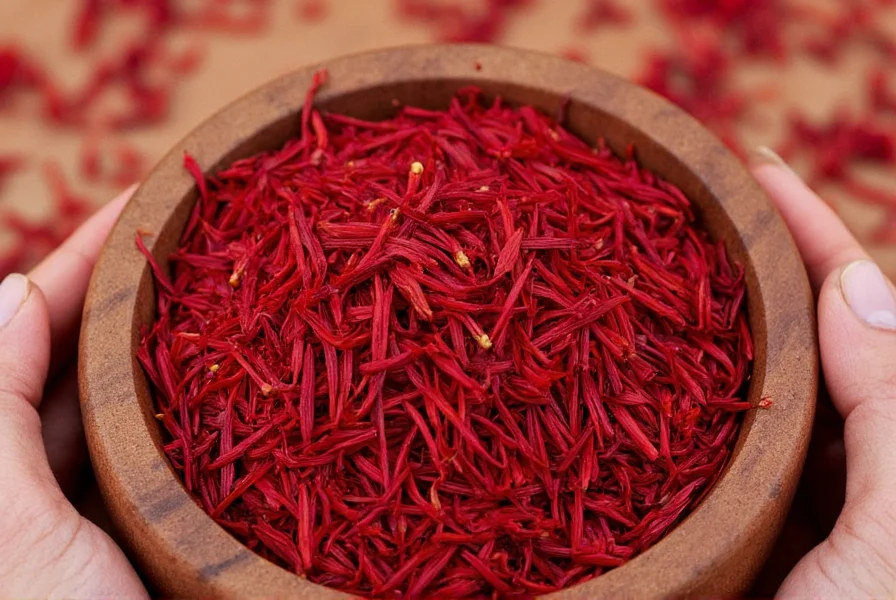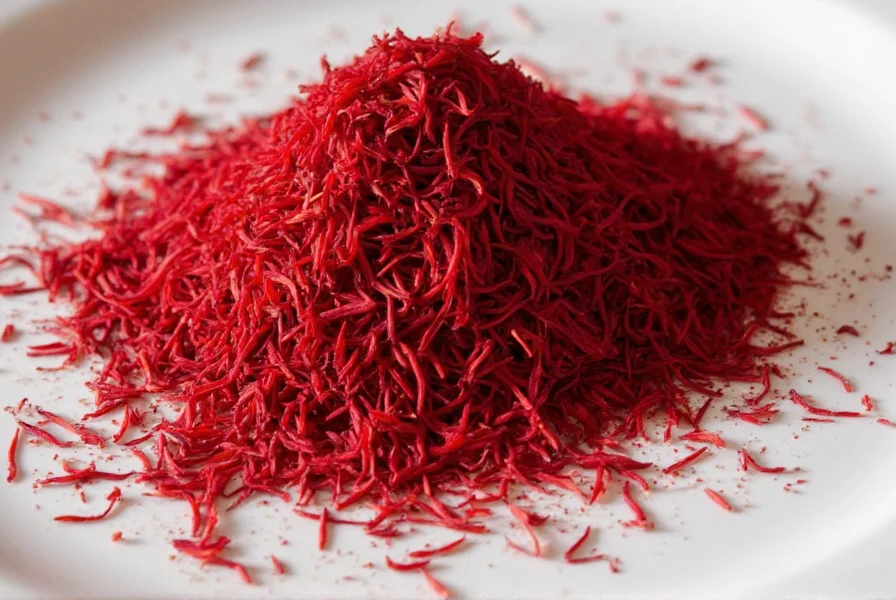When searching for the most expensive spice in the world by weight, saffron consistently tops the list with good reason. This vibrant crimson spice doesn't just hold the title of most expensive spice globally—it dramatically outpaces all competitors in price per ounce. Understanding why saffron commands such extraordinary value requires examining its unique production process, historical significance, and the meticulous human labor involved in bringing this precious spice to market.
Why Saffron Reigns as the Most Valuable Spice
Saffron's position as the world's most expensive spice stems from biological and economic factors that create perfect conditions for high pricing. Each saffron crocus flower produces only three delicate red stigmas, which must be hand-picked at dawn when the flowers are still closed. This timing is critical—wait too long and the flowers open, making the stigmas more difficult to harvest without damage.
The harvesting process represents one of agriculture's most labor-intensive endeavors. Workers must carefully pluck each flower by hand, then immediately extract the three stigmas using tweezers or fingernails. This delicate work must happen during a narrow harvesting window, typically just six weeks each autumn. After collection, the stigmas require careful drying to preserve their flavor, color, and aroma compounds.
| Spice | Price Per Pound | Production Difficulty | Flowers Needed Per Pound |
|---|---|---|---|
| Saffron | $500-$5,000 | Extremely High | 75,000 |
| Vanilla | $100-$300 | High | N/A (orchid pods) |
| Cardamom | $20-$50 | Moderate | N/A (seed pods) |
| True Cinnamon | $15-$30 | Low-Moderate | N/A (tree bark) |
The Labor-Intensive Journey from Flower to Spice
Understanding why is saffron so expensive requires examining each step of production. The saffron crocus grows primarily in Iran, which produces over 90% of the world's supply, along with smaller amounts from Spain, India, and Greece. The entire harvesting process must happen by hand—no machinery can replicate the delicate work required.
During the brief autumn harvest season, workers rise before dawn to collect flowers while they're still closed. Each flower yields just three stigmas, which must be carefully separated within hours of picking. The stigmas then undergo meticulous drying, traditionally over charcoal or in modern facilities with controlled temperature and humidity. This entire process explains why saffron costs so much more than other premium spices like vanilla or cardamom.

Historical Context of the World's Most Expensive Spice
Saffron's value isn't a modern phenomenon. Historical records show saffron trading for its weight in silver during ancient times. The spice appears in Egyptian medical papyri from 1550 BCE and was used to treat digestive issues, heart problems, and as a ceremonial offering.
During the Middle Ages, saffron became so valuable that laws were created to protect its quality. The Safranban in Nuremberg (1444) prescribed severe punishments for saffron adulteration, including burning fraudulent merchants at the stake. This historical context helps explain why saffron maintains its premium status as the most valuable spice in the world despite modern agricultural advances.
Identifying Genuine Saffron
Given saffron's extraordinary value, adulteration is common in the spice market. Real saffron characteristics include:
- Deep red threads with slight orange tips
- Distinctive honey-like aroma with hay notes
- When placed in warm water, genuine saffron releases color gradually over 15-20 minutes
- It should never be bright orange throughout (a sign of dye)
Be wary of saffron sold at suspiciously low prices—if it seems too good to be true, it likely contains safflower or other substitutes. The most expensive spice in the world simply cannot be produced cheaply given its labor requirements.
Applications Beyond the Kitchen
While saffron's culinary uses in dishes like Spanish paella and Persian rice are well-known, its applications extend far beyond flavoring. Traditional medicine systems have used saffron for millennia to address depression, PMS, and memory enhancement. Modern research continues investigating saffron's potential health benefits, including its antioxidant and anti-inflammatory properties.
The spice also serves non-culinary purposes—historically as a textile dye for royal garments and in religious ceremonies. This versatility contributes to saffron's sustained demand despite its extraordinary cost, making it not just the most expensive spice by weight but also one of the most multifaceted.

Saffron vs Other Premium Spices: An Economic Perspective
When comparing expensive spices, saffron's price dominance becomes clear. While vanilla ranks as the second most expensive spice, costing $100-$300 per pound, it requires significantly less labor to produce. Cardamom and true cinnamon command much lower prices despite their premium status.
The economic principle at work here is simple supply and demand with an extreme production bottleneck. Saffron's biological constraints—the limited number of stigmas per flower, the narrow harvest window, and complete dependence on manual labor—create an inherently limited supply that cannot easily scale to meet global demand.
Responsible Consumption of the World's Most Expensive Spice
Given saffron's premium price, understanding proper usage is essential. A little saffron goes a long way—typically just 10-20 threads (0.05-0.1 grams) suffices to flavor an entire dish serving four people. Proper storage in an airtight container away from light preserves saffron's potency for up to two years.
When purchasing saffron, consider supporting small-scale producers who maintain traditional harvesting methods. This not only ensures higher quality but also sustains the communities that have cultivated saffron for generations, preserving both the spice and the cultural heritage surrounding it.
Why is saffron the most expensive spice in the world?
Saffron is the most expensive spice due to its extremely labor-intensive harvesting process. Each saffron crocus flower produces only three stigmas that must be hand-picked at dawn during a narrow six-week harvest window. It takes approximately 75,000 flowers to produce just one pound of saffron threads, making it by far the most labor-intensive spice to produce.
How much does real saffron cost per ounce?
High-quality saffron typically costs between $30 and $300 per ounce, depending on grade and origin. The most premium varieties (like Iranian Super Negin or Spanish Coupe) can reach the higher end of this range. Be wary of saffron priced significantly below $30 per ounce, as it's likely adulterated or low quality.
What makes saffron different from other expensive spices?
Unlike vanilla or cardamom, which can be partially mechanized in production, saffron harvesting remains entirely manual. Each flower must be individually picked and processed by hand within hours. This biological constraint creates an inherent production bottleneck that prevents scaling, keeping saffron significantly more expensive than other premium spices.
How can I tell if saffron is genuine and high quality?
Genuine high-quality saffron has deep red threads with slight orange tips, a distinctive honey-like aroma, and releases color gradually when placed in warm water (over 15-20 minutes). Avoid saffron that's uniformly bright orange (likely dyed) or has a chemical smell. The most reliable indicator is price—authentic saffron cannot be produced cheaply given its labor requirements.
How much saffron do I actually need for cooking?
A little saffron goes a long way. Typically, just 10-20 threads (approximately 0.05-0.1 grams) is sufficient to flavor an entire dish serving four people. Professional chefs often crush saffron threads and steep them in warm liquid for 15-20 minutes before adding to dishes to maximize flavor and color extraction.











 浙公网安备
33010002000092号
浙公网安备
33010002000092号 浙B2-20120091-4
浙B2-20120091-4